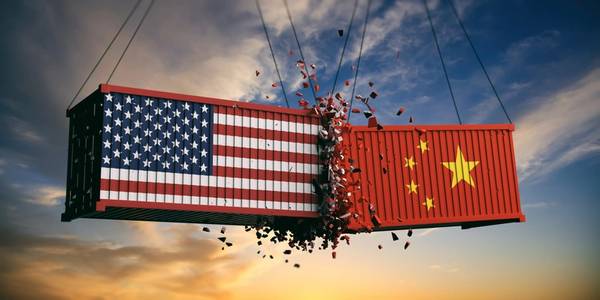
As 2020 approaches, the year ends with the tantalising prospect of a trade deal between the United States and China. Again.
Initial agreement to de-escalate the tariff war between the world's two biggest economies has been interpreted as a positive for the global economic outlook. But it's worth remembering that 2018 ended on a similar note - leaving the commodities outlook once again hostage to the whims of Donald Trump and Xi Jinping.
In November last year, the U.S. President and his Chinese counterpart also reached a trade agreement of sorts at the G20 summit in Argentina. That was also touted at the time as major progress to ending the tariff war that started in the middle of 2018.
It didn't take long for the two sides to once again reach an impasse. New tariffs were imposed this year, with the Trump administration ultimately planning to effectively put taxes on all of China's exports to the United States.
True, last week's 'Phase One' deal stops the latest round of tariffs that were set to come into force on Dec. 15. But it leaves most in place - and the bulk of the hard work to reach a final resolution still to come.
While markets will cheer even this modest easing of tension, they should still be wary of a breakdown of talks and risks that the tariff war will be re-ignited.
Another major risk is the commitment by China to nearly double its imports from the United States over the next two years, with commodities expected to do much of the heavy lifting.
The ambition for an extra $100 billion a year above 2017 levels in Chinese imports of U.S. goods and services will require a massive leap in purchases of agricultural goods like soybeans and hogs, and also of energy commodities such as crude oil, coal and liquefied natural gas (LNG).
Even if China makes a genuine effort to buy this amount more, it's doubtful U.S. exporters could actually supply that much, especially in soybeans and perhaps even in LNG and coal.
DYNAMICS OF DISRUPTION
If Beijing really does try to buy huge volumes of U.S. commodities, it's also likely to disrupt trade flows around the world.
U.S. competitors are unlikely to sit back and let the Americans take their market share in China, and even if they are forced to by Beijing's policies, then they will simply try to muscle U.S. suppliers out of other markets.
For example, if Australia is forced by political pressure to sell less coal and LNG to China, it would be reasonable to expect that Australian producers will do everything in their power to grab market share from the United States in places such as Japan, South Korea and India.
Effectively, even if the U.S.-China trade truce holds, it may result in shifting commodity flows if Beijing really does try to massively boost imports from the United States.
Beyond the trade dispute itself, there are still some interesting dynamics in commodity markets.
In crude oil, there are the ongoing efforts by OPEC and its allies to boost, or at least support, prices by restricting their output.
The situation between the United States and the target of its sanctions, Iran and Venezuela, remains unresolved with little apparent movement toward resolution.
There are also questions over demand growth, especially in India, where softer economic growth has curtailed import growth.
China remains the standout for global crude demand growth, taking more than 900,000 barrels per day more so far in 2019.
But the world's biggest crude importer may be close to filling its strategic storage, and this may dent some future growth.
'GRIN OF SALT'
Even if China does continue to grow its crude imports at a rapid pace, it's likely that it will also boost its exports of refined fuels given the country's vast, and largely new, low-cost refineries.
This may mean that while Chinese crude demand growth remains robust, it's rising fuel exports effectively serve to displace crude demand somewhere else, most likely in countries with a less competitive refining sector.
LNG prices are likely to remain under pressure in Asia amid slower demand growth from the second-biggest importer China, as well as the arrival of new sources of supply in the United States.
Cheaper natural gas may put a lid on thermal coal prices in some markets, but once again the outlook will depend on developments in China and India, the world's two largest importers.
China is key for iron ore and steel, although the recovery in supply from Brazil may put downward pressure on prices, especially if the Chinese steel sector has a modest 2020. That looks to be the case, given the softer outlook for both housing construction and infrastructure spending.
Copper is likely to once again vacillate between the outlook for the global economy and the inevitable supply disruptions, with brighter hopes for growth adding a slight positive feel to the industrial metal.
Overall, commodity markets have effectively trodden water for much of this year, and may again do so in 2020, subject to the ups and downs of the U.S.-China trade dispute and whatever view of the global economy gains the most traction.
As the ever-quotable U.S. baseball legend Yogi Berra once said: "It's like deja vu all over again."
But perhaps one of Berra's many other pearls of wisdom is equally apposite for the year ahead: "Take it with a grin of salt.
By Clyde Russell



